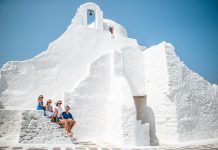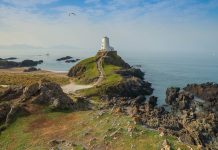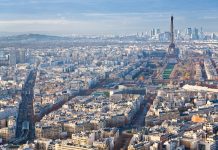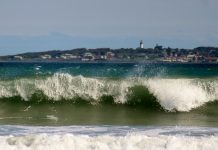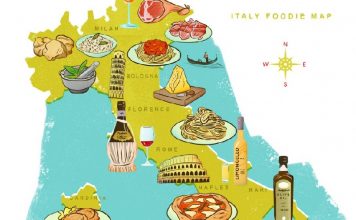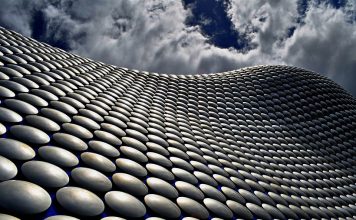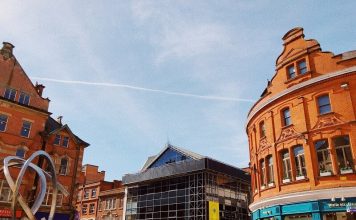Alicante is a city in the Valencian Community, Spain. It is the capital and most populated municipality of the province of Alicante. Alicante is famous for its rich historical and cultural heritage, as well as its natural beauty and gastronomy.
What is Alicante Known For?
Alicante has over 3,000 years of history, and has been ruled by the Phoenicians, the Romans, the Visigoths, the Moors and the Christian kings, each one leaving their mark on the city. Alicante has a majestic castle, a fortified Islamic palace in the city centre, monumental remains of the Roman Lucentum, Baroque-style palace houses, unique treasures of the work of Eusebio Sempere, emblems of modern architecture and one of the most diverse and vibrant festivals in Spain.
Alicante is also famous for its location by the Mediterranean Sea, which provides scenic views and recreational opportunities. Alicante has several beaches, such as San Juan, Postiguet and Albufereta, where visitors can enjoy swimming, sunbathing, surfing and sailing. Alicante is also close to natural parks, such as the Montgó, the Font Roja and the Tabarca Island, where visitors can enjoy hiking, biking, diving and other outdoor activities.
Alicante is also famous for its cuisine, which reflects its multicultural past and its agricultural wealth. Alicante offers a variety of dishes, such as arroz a banda (rice with fish and saffron), cocido con pelotas (stew with meatballs), turrón (nougat) and horchata de chufa (tiger nut milk). Alicante is also known for its wines, especially those from the Alicante and Marina Alta denominations of origin.
Famous Drinks in Alicante
One of the most famous drinks in Alicante is the fondillón, a sweet wine made from overripe Monastrell grapes. Fondillón is usually dark and strong, and can be aged for up to 50 years. It is often served in small glasses or clay cups. Fondillón is typically consumed during festivals, celebrations and family gatherings.
Another famous drink in Alicante is the mistela, a fortified wine made from Moscatel grapes. Mistela is usually light and fruity, and can be white or rosé. It is often served chilled or with ice. Mistela is a popular drink among locals and tourists alike.
Alicante also has a variety of beers to offer, both local and international. Some of the local breweries are Althaia Artesana, Spigha and Santa Faz, which produce craft beers with different styles and flavours. Some of the international beers that can be found in Alicante are Guinness, Paulaner and Heineken.
Famous Sports in Alicante
One of the most popular sports in Alicante is football (soccer), as in most parts of Spain. The city has several football teams, such as Hércules CF, which plays in the third division of the Spanish league, and CD Alcoyano, which plays in the fourth division. Football fans in Alicante also support Real Madrid or Barcelona, the two biggest clubs in Spain.
Another sport that has a long tradition in Alicante is sailing. The city hosts several sailing events throughout the year, such as the Volvo Ocean Race (VOR), which takes place every three years and starts from Alicante. Sailing is also popular among amateurs, who can rent boats or take courses at various marinas and clubs.
Alicante also hosts several other sporting events throughout the year, such as marathons, triathlons, cycling races and golf tournaments. Some of these events are:
- The Medio Maratón de Alicante: A 21-kilometer race that takes place in April along the seafront promenade and the historic centre.
- The Triatlón de Alicante: A triathlon that takes place in June and consists of swimming 1.5 km, cycling 40 km and running 10 km.
- The Vuelta Ciclista a la Comunidad Valenciana: A cycling race that takes place in February and covers 600 km through various towns and cities.
- The Costa Blanca Golf Trophy: A golf tournament that takes place in October at various golf courses.
Famous Streets in Alicante
One of the most famous streets in Alicante is Rambla de Méndez Núñez, which connects Plaza de los Luceros with Plaza del Mar. It is a pedestrian street that offers a variety of shops, cafes, restaurants and bars. It is also where some of the main events of the Hogueras de San Juan take place, such as concerts, parades and fireworks.
Another famous street in Alicante is Calle Mayor (or Calle San Francisco), which runs parallel to Rambla de Méndez Núñez and forms part of the old city wall. It is a narrow street that has many historical buildings, such as the Town Hall, the Cathedral and the Basilica of Santa María. It is also where some of the most traditional shops and restaurants are located.
A third famous street in Alicante is Avenida de la Estación, which leads to the entrance of the Ciudad Monumental (Monumental City), the historical quarter of Alicante. It is a wide avenue that has many modern buildings, such as the Central Market, the Auditorium and the Museum of Contemporary Art. It is also where some of the most exclusive shops and boutiques are situated.
FAQs about Alicante
- What is the best time to visit Alicante?
The best time to visit Alicante depends on your preferences and interests. If you want to enjoy the pleasant weather and avoid the crowds, spring (March-May) and autumn (September-November) are ideal seasons. If you want to experience the festive atmosphere and cultural events, summer (June-August) and winter (December-February) are also good options.
- How to get to Alicante?
Alicante is well connected by road, rail and air. You can drive to Alicante from Madrid (420 km), Valencia (180 km) or Barcelona (520 km) via highways A-3 or A-7. You can also take a train from Madrid (3 hours), Valencia (2 hours) or Barcelona (5 hours) via Renfe or AVE. You can also fly to Alicante Airport (10 km) or Valencia Airport (200 km) and then take a bus or a taxi to Alicante.
- What are some of the must-see attractions in Alicante?
Some of the must-see attractions in Alicante are:
- The Castillo de Santa Bárbara: A 9th-century castle that stands on a hill overlooking the city and the sea. It offers panoramic views and houses a museum about the history of Alicante.
- The Palacio de la Diputación: A 19th-century palace that showcases the splendor of the provincial government. It has a neoclassical facade, a grand staircase and a chapel.
- The Museo Arqueológico Provincial de Alicante (MARQ): A museum that displays archaeological, ethnographic and fine art collections from different periods and cultures.
- The Explanada de España: A promenade that runs along the seafront and is paved with marble tiles in red, black and white. It has palm trees, benches and kiosks.
- The Isla de Tabarca: A small island that was once a pirate base and now a marine reserve. It has a beach, a lighthouse, a church and a museum.
See more Famous Places in Spain:
- What is Seville Famous For?
- What is Cadiz Famous For?
- What is Huelva Famous For?
- What is Caceres Famous For?
- What is Granada Famous For?
- What is Madrid Famous For?
- What is Barcelona Famous For?
- What is Valencia Famous For?
- What is Almeria Famous For?
- What is San Sebastian Famous For?
- What is Santanter Famous For?
- What is Salamanca Famous For?
- What is Oviedo Famous For?
- What is Valladolid Famous For?
- What is Cordoba Famous For?
- What is Alicante Famous For?
- What is Bilbao Famous For?
- What is Palma Famous For?
- What is Murcia Famous For?
- What is Zaragoza Famous For?

